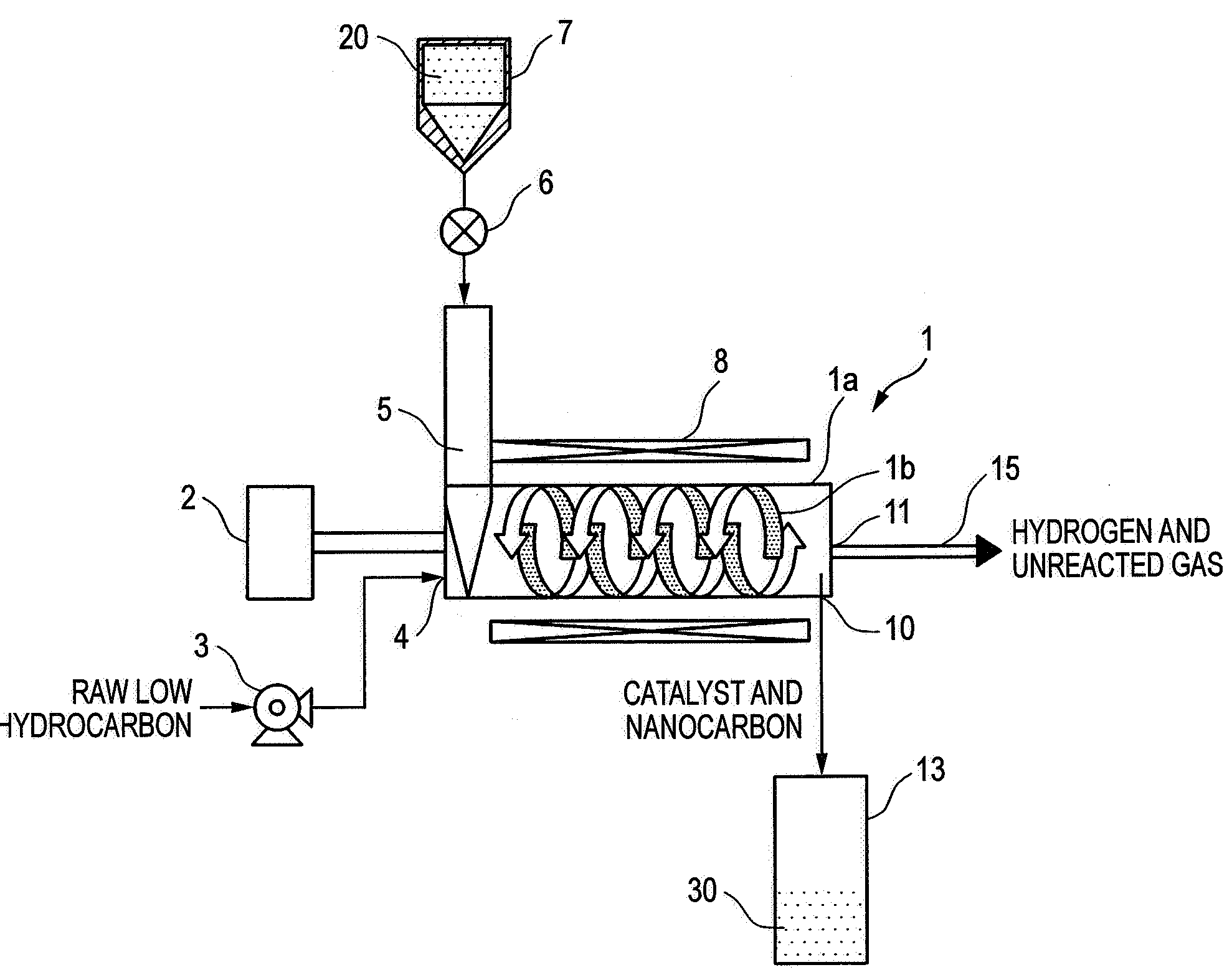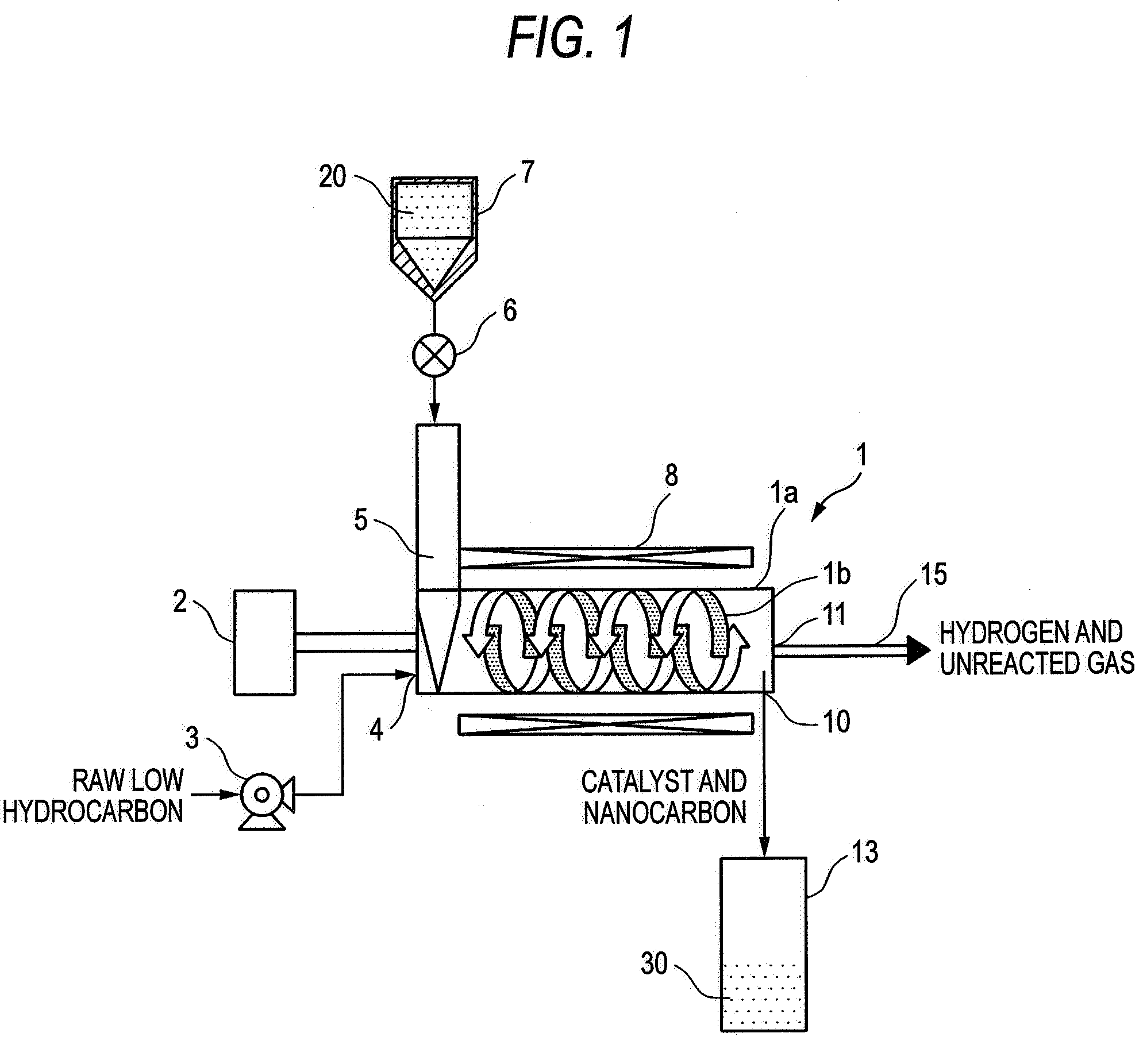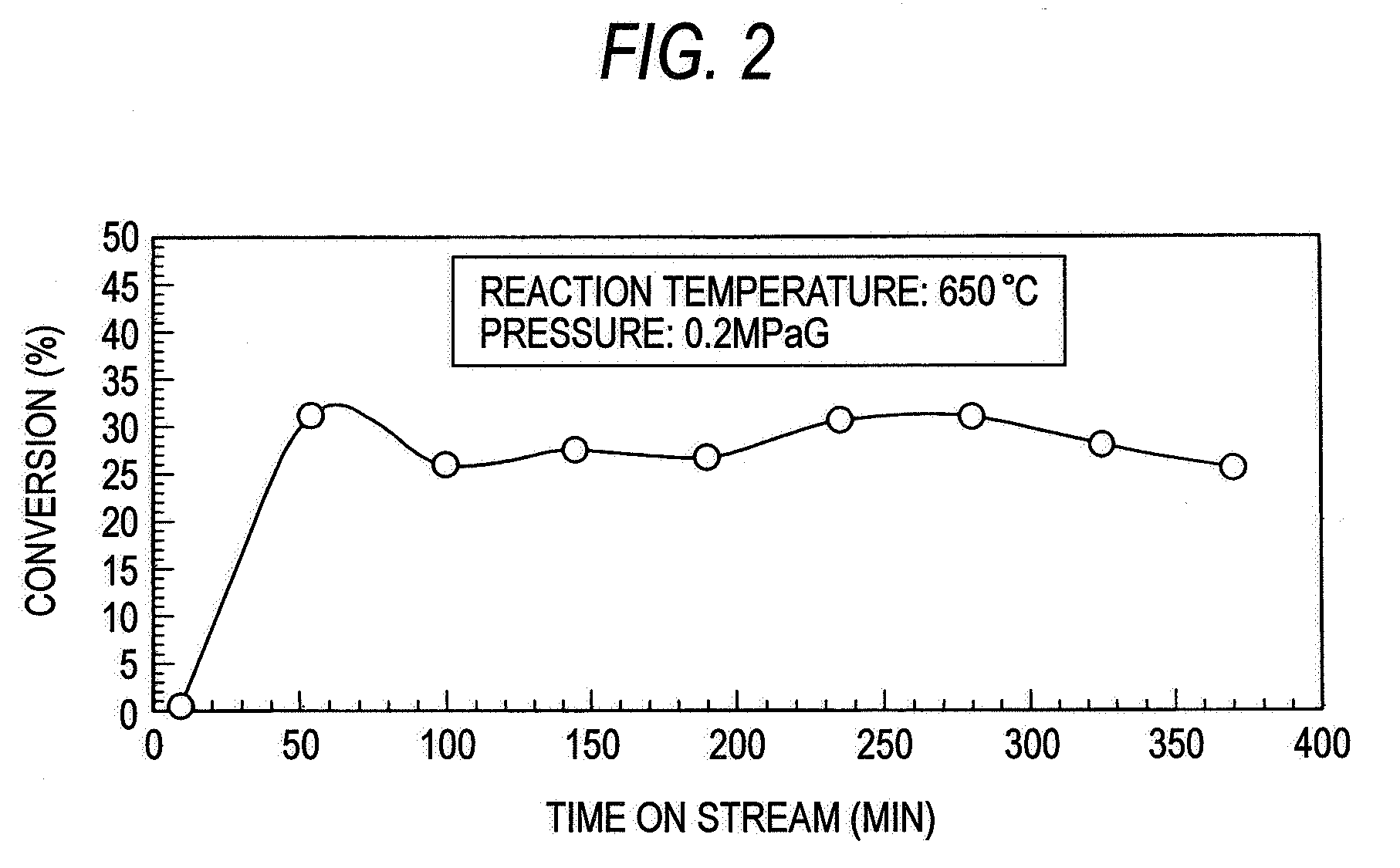Method for producing nanocarbon and catalytic reaction device for producing nanocarbon
a catalyst and nano-carbon technology, applied in the direction of chemical/physical/physical-chemical processes, physical/chemical process catalysts, chemical apparatus and processes, etc., can solve the problems of deterioration of reaction efficiency and energy efficiency, disadvantage of continuous reaction, and cost addition, and achieve the effect of reducing the number of catalyst particles in the bed, reducing the number of catalyst particles, and improving the efficiency of reaction efficiency
- Summary
- Abstract
- Description
- Claims
- Application Information
AI Technical Summary
Benefits of technology
Problems solved by technology
Method used
Image
Examples
example
[0053]An example of reformation of methane using the screw feeder type catalytic reactor shown in FIG. 1 will be described below. In the present example, the temperature and pressure in the screw feeder main body were adjusted to 650° C. and 0.2 MPaG, respectively, and the flow rate of methane was predetermined to about 3,000 ml / g-Ni / h as calculated in terms of SV value.
[0054]The relationship between the time on stream of operation and the conversion is shown in FIG. 2. In general, the catalytic properties deteriorate with time. In the present example, however, the conversion remains constant because unused catalyst is continuously fed. It was also made obvious that unused catalyst is fed at a constant rate by a screw feeder while the resulting nanocarbon is being extruded without clogging the feeder, allowing continuous progress of reaction without clogging the reaction pipe.
[0055]FIG. 3 is a SEM photograph of nanocarbon produced by the reaction. This SEM photograph demonstrates th...
PUM
| Property | Measurement | Unit |
|---|---|---|
| pressure | aaaaa | aaaaa |
| temperature | aaaaa | aaaaa |
| diameter | aaaaa | aaaaa |
Abstract
Description
Claims
Application Information
 Login to View More
Login to View More - R&D
- Intellectual Property
- Life Sciences
- Materials
- Tech Scout
- Unparalleled Data Quality
- Higher Quality Content
- 60% Fewer Hallucinations
Browse by: Latest US Patents, China's latest patents, Technical Efficacy Thesaurus, Application Domain, Technology Topic, Popular Technical Reports.
© 2025 PatSnap. All rights reserved.Legal|Privacy policy|Modern Slavery Act Transparency Statement|Sitemap|About US| Contact US: help@patsnap.com



